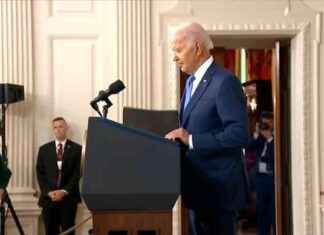Kariba resembles a sea. It is an artificial lake so large that it is shared by two states, Zambia to the northwest and Zimbabwe to the southeast. In fact, both try to take tourist advantage of the natural and scenic wealth of their prodigious dimensions.
Just some information, as an introduction. From one end to the other it measures 280 km, more than between Girona and Amposta. Its surface area, 5,580 km2, is larger than that of thirty countries (without going any further, multiply Andorra by 12 or Malta by 17). And the water it can contain, up to 180 km3, represents 250 times the volume of all the internal basins of Catalonia. Because in addition to being a lake, the Kariba is also the reservoir with the largest capacity in the world.
Its weight, estimated at 200,000 million tons, is equivalent to a quarter of the buildings that are sinking New York. It has even been speculated whether it could have caused earthquakes (some of magnitude greater than 5), a hypothesis that has not been proven.
Be that as it may, no number is capable of describing the Kariba spectacle. Relaxing destination, always in the shadow of the fame and bustle of Victoria Falls, one of its biggest draws is its postcard sunsets. They can be seen from any of the hotel complexes opened in recent years on its banks, although there is also the alternative of sailing on the red-tinged waters… The possibilities are wide: from boats and canoes to cruises and houseboats. There are also numerous options for practicing water sports and fishing.
The lake, which contains nearly 300 islands (193 in its Zimbabwean part and 103 in its Zambian part), has a varied flora and fauna. Not in vain, before flooding the area – in the late 1950s – the vegetation was burned to create a thick layer of fertile soil.
Today the Kariba environment is populated by large mammals (elephants, rhinoceroses, hippos, buffalo crocodiles, lions, leopards, zebras, hyenas…) and a notable variety of birds (among which, the cormorant, the flamingo, the pelican, the bustard and the slaty falcon).
By the way: the most veterans of the place remember the device to rescue animals of all species, during the completion of the Kariba dam. Between 1958 and 1964, coinciding with the filling of the reservoir, the so-called Operation Noé was carried out. A team of 60 forest rangers, led by Rupert Fothergill, used all types of resources – including boat transportation – to save as many specimens as possible. It is estimated that they found more than 6,000. Many of them – from snakes, antelopes and monkeys to elephants – were moved to the nearby Matusadona reserve. There you could see a plaque in honor of Fothergill.
Still, as the waters rose, a myriad of insects and small rodents fled in all directions. According to what they say, the skies darkened with the number of birds attracted to the feast.
The dam itself has become a must-see for Kariba tourists. Although it requires the sometimes cumbersome process of requesting a temporary permit to cross the border between Zimbabwe and Zambia, it is worth it. A massive concrete arch retains the waters of the Kariba River to generate hydroelectric power for both countries. Its dimensions are imposing: 617 meters long and 128 meters high.
The dam is currently undergoing extensive rehabilitation. Some work, partially financed with European funds, that could last for more than a decade. The force of the water released over more than 60 years – the facilities were inaugurated in 1960 – has eroded the soil, threatening the foundations of the arch. A pioneering operation in the world, as the following video summarizes.
The dam is an unfortunate memory for the Tonga: a people essentially dedicated to subsistence agriculture. When the British colonial authorities undertook its construction, they forcibly expelled some 57,000 Tonga. There were dozens of injuries and deaths. And a good part of the population was relocated to arid lands. For all this, Tonga organizations have not stopped demanding compensation from both the governments of Zambia and Zimbabwe and the World Bank.
According to Tongan mythology, the dam separated Nyami Nyami – the god of the Zambezi River – from his wife. He became trapped in the reservoir while she continued downstream. Since then Nyami Nyami is still angry… the figure of him, half snake, half fish, is characteristic of Tonga crafts. It is found in the form of a sculpture or jewel and in very diverse materials, from wood or bone to ivory or gold. It has become a prized souvenir in the surroundings of Kariba.








